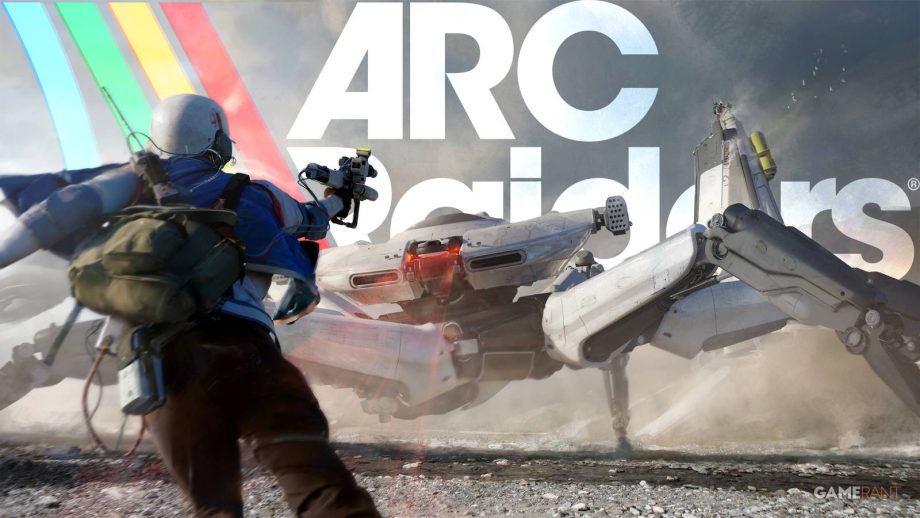One of ARC Raiders‘ standout qualities is its sense of immersion, which it builds through a variety of elements including its visuals, atmosphere, and audio design. Throughout its development, however, Embark Studios ensured it wouldn’t only be passively immersive but that players would also experience active immersion through its gameplay. One of the primary ways it achieved this was by building into ARC Raiders a physics-based system of visual feedback that would eliminate the need for a traditional UI and therefore more fully immerse players in the world.
ARC Raiders is a PvPvE experience, which means that as players explore its world, enemy (and potentially friendly) players are not the only opposition they encounter. More frequently, in fact, players will encounter various types of ARCs — machines that will stop at nothing to eliminate any humans they find traversing the surface. It is in these encounters that players can experience one of the more immersive aspects of ARC Raiders‘ gameplay, where clear, visual, physics-driven feedback tells them everything they need to know about where they stand in a battle.
ARC Raiders Uses Physics Rather Than UI to Keep Players Immersed in the Experience
The latest episode of The Evolution of ARC Raiders, a docuseries detailing every milestone of the game’s development, just dropped on the official ARC Raiders YouTube channel, offering a deeper dive into the idea behind why Embark ultimately chose physics over a standard UI. In this video, creative director Stefan Strandberg provides some insight into the how and why of ARC Raiders‘ physics, with the end goal being as much immersion as possible without compromising the accessibility the game is known for.
“Allow the things in there to be real. That’s why we want to use gradual destruction on the drones. You shoot off a thruster and that disables its ability to fly. Of course, it does. It’s physics talking back to you, and there’s something fun to play, with physics. You don’t need a health bar to tell you that,” Strandberg stated during the latest episode. In other words, Embark’s design philosophy with ARC Raiders was ultimately rooted in the idea that players shouldn’t need the enemies they’re targeting to have a visible health bar in order to understand what is happening. In the end, the team wanted to build a world that could communicate that information just as clearly as if there were a UI present in the game, so they leaned heavily into physics as a way to influence the player’s decision-making.
Allow the things in there to be real.
According to Strandberg, this ultimately came down to a willingness to “trust” the player’s senses to translate the information they see on the screen into data. Everything from stagger animations to debris flying off of a machine is meant to be treated as a signal, creating a feedback loop in ARC Raiders that encourages players to stay present in the moment rather than staring at a health bar. As the creative director stated, “You can make those calls trusting the human ability to decode that — listening, looking, and not relying on a UI to tell you the actual truth of what’s going on.”
And that’s precisely one of the things that makes ARC Raiders so immersive. Even without a UI telling players when they can safely move on from a fight, with enough time spent in the game, that much becomes obvious. When a rotor is successfully shot off a Wasp, players can expect it to struggle to stay in the air. If one rotor on each side of the machine is taken out, it may either dive toward the ground or spin out of control. If players fire enough rounds from a Hullcracker at a Bastion’s leg in ARC Raiders, they might eventually see the machine kneeling down to recover. Though a traditional UI might have made encounters like this easier, the point was never about difficulty but about immersion.
ARC Raiders‘ physics-driven design reflects Embark’s broader goal of letting the world communicate information directly to the player through clear visual feedback. Episode 2 of The Evolution of ARC Raiders outlines how the team built systems that rely on movement, damage states, and machine reactions to convey progress during encounters. Strandberg describes this as a way to enhance ARC Raiders‘ iconic immersion while keeping the experience readable without a traditional UI. With the studio continuing to highlight this philosophy in its ongoing development episodes, the physics systems remain a central part of how ARC Raiders is presented and understood.

- Released
-
October 30, 2025
- ESRB
-
Teen / Violence, Blood







